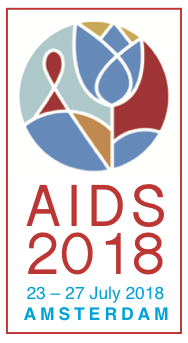First randomised kick-and-kill cure study fails to reduce HIV reservoir: RIVER study reports vorinostat and vaccines show activity, but not enough
3 August 2018. Related: Conference reports, Cure-related research, World AIDS 14 Barcelona 2002.
 Simon Collins, HIV i-Base
Simon Collins, HIV i-Base
The first randomised human study using a kick-and-kill strategy to reduce the viral reservoir has unfortunately not been successful, even though the individual components were active.
Results from the UK phase 2 open-label RIVER study were presented on 24 July at a press conference at the international AIDS 2018 conference. The kick-and-kill strategy involves using one drug to reactivate sleeping HIV-infected CD4 cells (the kick) and then effectively target these cells with a second intervention of immune-boosting vaccines (the kill). [1]
Several compounds have shown promising results in test-tube and animal studies but RIVER is the first human study that also included a control arm. It used the HDAC inhibitor vorinostat as the kick and a combination of two vaccines (ChAdV63.HIVconsv to prime immune responses and MVA.HIVconsv to boost them) as the follow-up kill, with ART-only as the control arm.
The study enrolled 60 HIV positive men diagnosed during primary HIV infection (PHI) who started effective ART within four weeks.
The first vaccine was given in the first week, with the second eight weeks later. Vorinostat was then given every three days for ten doses. This involved an intensive level of involvement and control participants had a similar number of matched clinic visits.
Baseline characteristics were balanced between the active and control arms. Overall, median age was 32 years (IQR: 29 to 40). Median CD4 count was 708 (IQR: 568 to 788). At baseline, viral load was <200 copies/mL in all participants with 98% <50 copies/mL. Median time on ART from primary HIV infection (PHI) to randomisation was 28 months (IQR: 27 to 36).
Retention during follow-up was high, with no discontinuations, and all participants providing data for the primary endpoint. Participants in the active arm included nearly 100% of visit attendance, with slightly more missed clinics visits in the control arm.
There were no significant differences between groups for the primary endpoint of change in the viral reservoir between weeks 16 and 18 post-randomisation, measured by total DNA/million CD4 cells (difference: 0.04 log/million cells [95%CI: –0.03 to + 0.11], p=0.26). By this primary endpoint, the combined interventions were no different to the control arm on ART. There was also no difference in a secondary endpoint of the proportion with undetectable viral outgrowth measuring replication competence (0.42 [95%CI: 0.13 to 1.37], p=0.151).
However, the intervention arm showed significantly higher HIV-specific CD4 responses post vaccination (including IFN-gamma, IL-2, TNF-alpha and CD154 and higher functional CD8 responses (IFN-gamma and TNF-alpha) compared to the control group. In samples from 22/30 participants in the active arm, histone acetylation increased by 3.2 (95%CI: 2.4 to 4.2), two hours post-vorinostat, p< 0.001, with no differences between study visits.
Simon Collins is a community representative on the RIVER study.
comment
These results raise many questions about the lack of effect on the viral reservoir. Was this related to needing more potent compounds; whether the primary endpoint was measured too early; whether this was the best cure outcome to measure; or whether alternative kick-and-kill strategies would be more effective?
The conclusion also emphasised that the results showed the importance of always including a control arm in cure intervention studies.
References
- Press conference. RIVER study results. Tuesday 24 July 2018. 10.00 am.
http://www.aids2018.org/Media-Centre/Resources/Press-programme - Fidler S et al. A randomised controlled trial comparing the impact of antiretroviral therapy (ART) with a ‘kick-and-kill’ approach to ART alone on HIV reservoirs in individuals with primary HIV infection (PHI); RIVER trial. AIDS 2018, 23-27 July 2018, Amsterdam. Late breaker oral abstract TUAA0202LB.
http://programme.aids2018.org/Abstract/Abstract/12977 (abstract)

